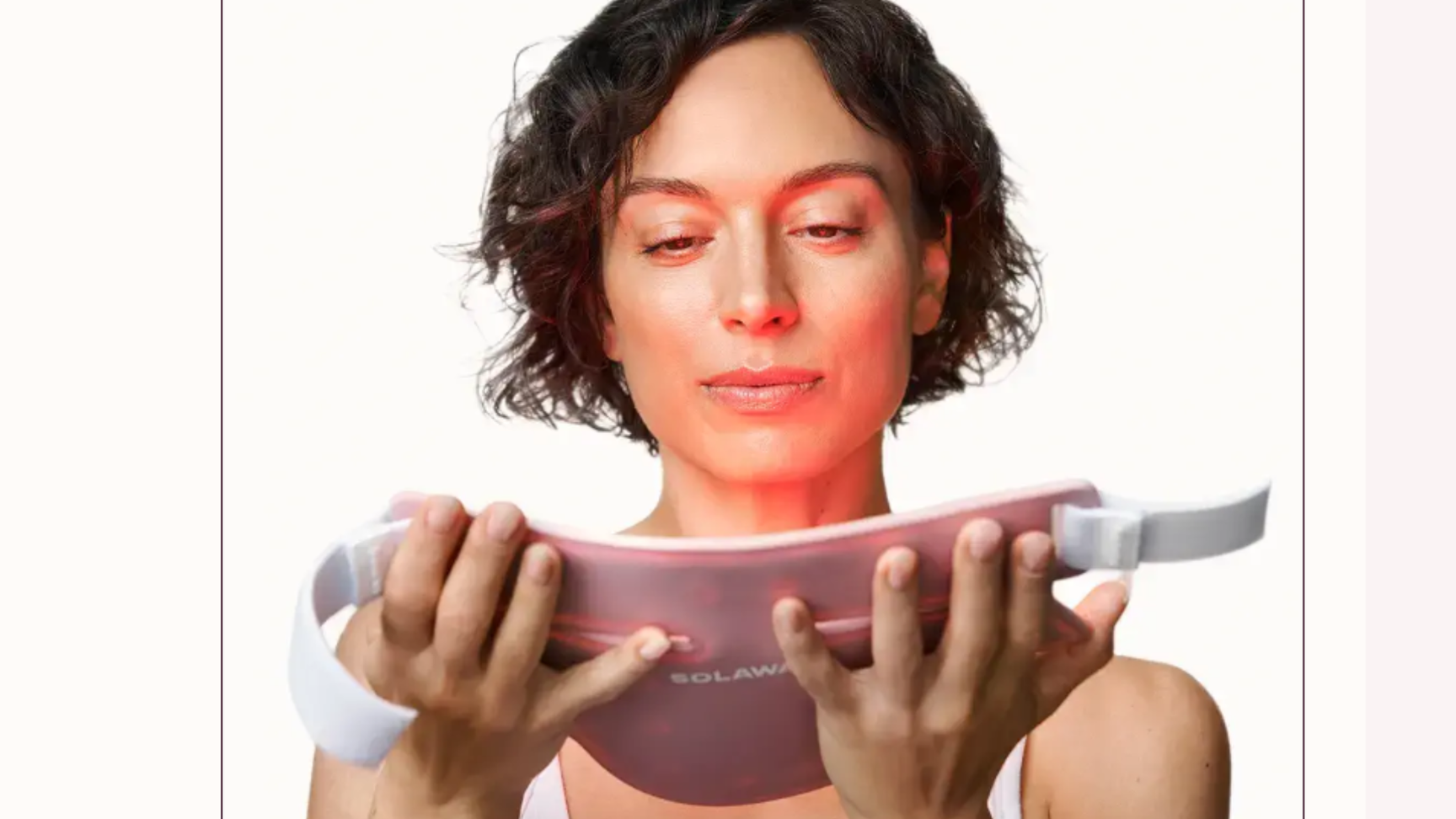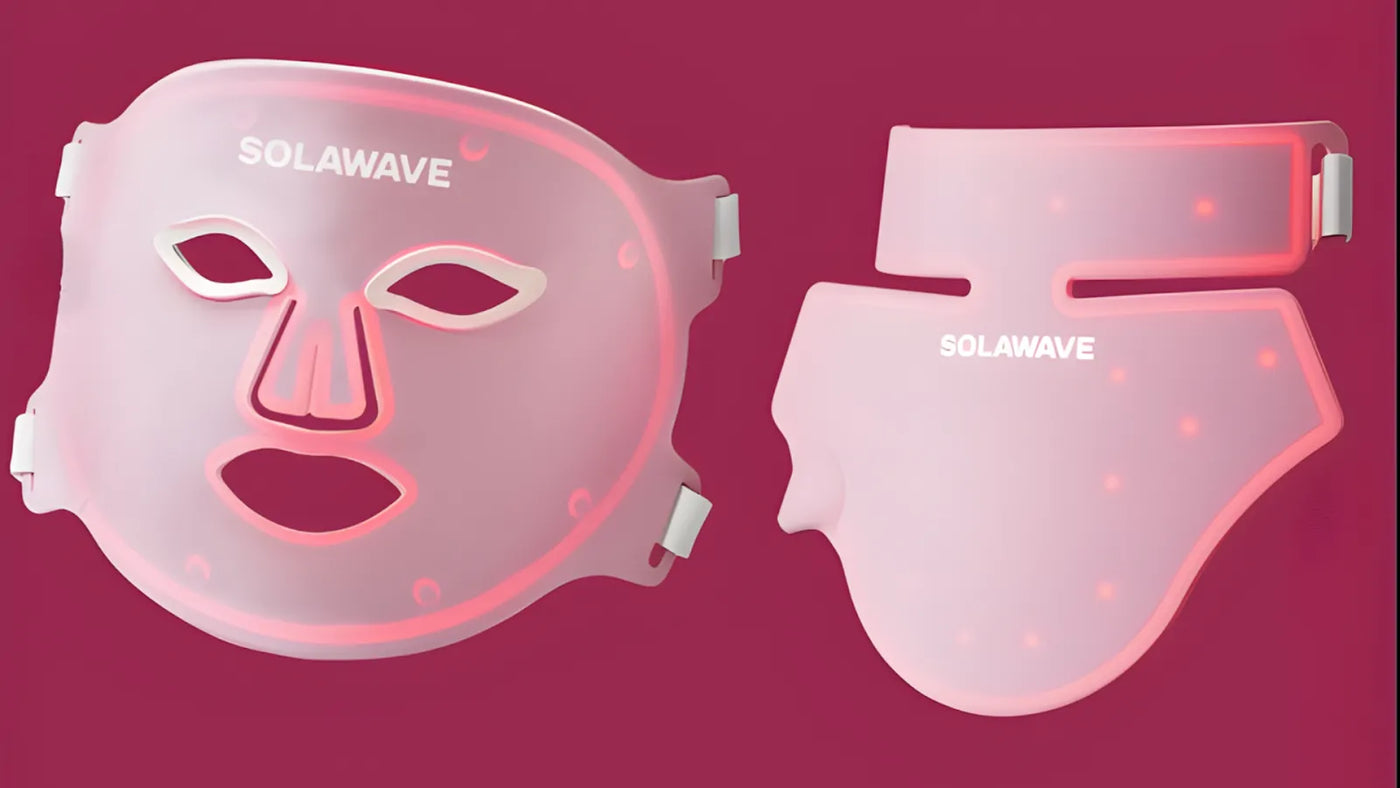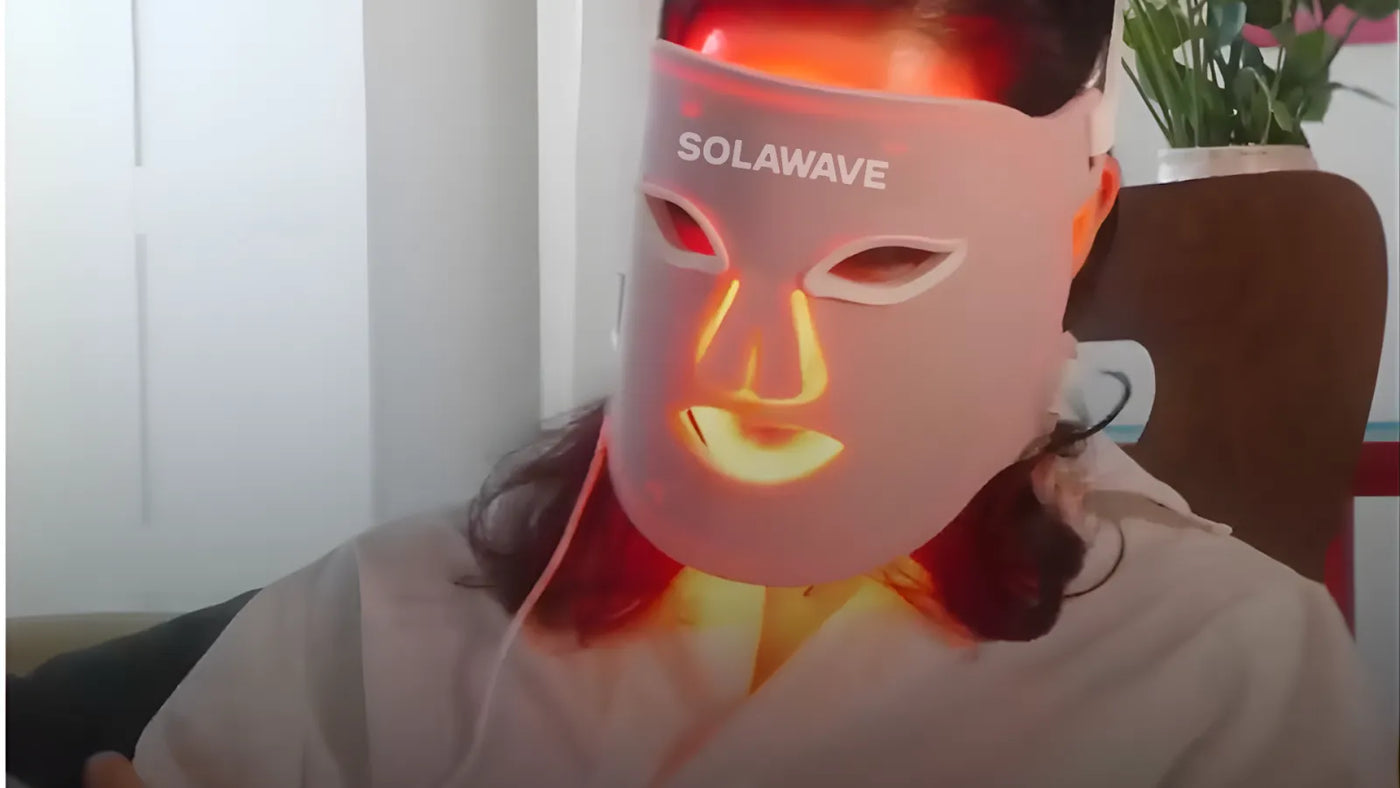

Red Light Therapy vs. Traditional Treatments for Keratosis Pilaris: Which Is More Effective?
Dealing with keratosis pilaris, often called "chicken skin," can be a persistent challenge. Those stubborn, rough bumps on your arms, legs, or cheeks can feel impossible to manage, no matter how many scrubs or creams you try. If you're looking for a better way, you're in the right place. This keratosis pilaris treatment comparison will look at traditional methods alongside a gentle, modern approach: red light therapy. As we unpack these options, you'll see why advanced light-based treatments are becoming a preferred solution for achieving smoother, clearer skin.
What Exactly Is Keratosis Pilaris?
Keratosis pilaris (KP) is a very common and harmless skin condition that affects up to 40% of adults. It occurs when keratin, a hard protein that protects your skin from infection and other harmful things, builds up and forms a plug that clogs the opening of a hair follicle. This buildup creates tiny, rough-feeling bumps that can sometimes appear red or inflamed. It's this bumpy texture that has led to its common name, "chicken skin."
While it's often genetic, meaning it runs in families, external factors can certainly make it more noticeable. Dry skin is a major contributor, which is why many people find their KP worsens during the cold, dry winter months and improves in the summer with higher humidity. The most common areas for these bumps to appear are the upper arms and thighs. However, they can also show up on the buttocks and even the cheeks, where they can be mistaken for acne. Though it isn’t medically serious, the appearance of "chicken skin" can be a source of frustration for many who simply want smooth, even-toned skin.
A Look at Traditional Chicken Skin Treatment Options
For years, the go-to advice for managing KP has centered on exfoliation and heavy moisturization. These traditional chicken skin treatment options aim to remove the keratin plugs that cause the bumps and to soften the skin's surface for a smoother feel. These methods can be somewhat effective, but they often require a lot of effort and don't always deliver the desired results.
Topical Exfoliants: Creams and Lotions
The most common approach involves over-the-counter or prescription creams containing chemical exfoliants. These ingredients work by dissolving the bonds that hold dead skin cells together on the skin's surface, helping to unclog the follicles. Think of them as a way to chemically "un-glue" the excess keratin.
Common active ingredients you'll find in these products include:
Alpha-Hydroxy Acids (AHAs)
Lactic acid and glycolic acid are popular choices for gently removing dead skin from the surface. They are water-soluble and work on the outermost layer of the skin.
Beta-Hydroxy Acids (BHAs)
Salicylic acid is oil-soluble, which gives it an advantage. It can penetrate deeper into the pores to exfoliate inside the hair follicle, breaking up the clog from within.
Urea
This ingredient is a humectant that also has keratolytic (keratin-dissolving) properties. It both exfoliates the dead skin and draws moisture into the skin, making it a powerful dual-action option for rough, dry skin.
Retinoids
Derived from vitamin A, retinoids like retinol and prescription-strength tretinoin work by accelerating cell turnover. This rapid renewal process helps prevent dead skin cells from building up and clogging follicles in the first place.
While these topicals can be effective, they often come with downsides. They can be drying and cause irritation, redness, and stinging, especially for those with sensitive skin. They also increase your skin's sensitivity to the sun, so daily sunscreen use is non-negotiable. Furthermore, results depend on diligent, continuous use. The bumps often return as soon as you stop applying the products, locking you into a cycle of constant treatment.
Physical Exfoliation and Home Remedies
Another common strategy is physical exfoliation. This involves manually scrubbing the skin to try and dislodge the keratin plugs. Some people turn to various keratosis pilaris home remedies to achieve this.
Scrubs and Brushes
Using body scrubs with abrasive particles like sea salt or sugar, or tools like loofahs, exfoliating mitts, and dry brushes, can help smooth the skin's surface. However, this approach carries a significant risk. It’s very easy to be too aggressive, and scrubbing too hard can lead to irritation, micro-tears in the skin barrier, and increased redness, ultimately making the underlying inflammation worse.
Natural Soothers
Many people explore keratosis pilaris home remedies like applying coconut oil for moisture or taking oatmeal baths to calm irritation. While these natural options can soothe the skin and provide temporary relief from dryness and itchiness, they don't address the core issues of keratin overproduction and clogged follicles.
A Modern Solution: The Power of Red Light Therapy
As our understanding of skin health grows, so do our treatment options. Red light therapy has emerged as a scientifically-backed, gentle, and highly effective way to manage skin conditions, including keratosis pilaris. The red light therapy KP effectiveness lies in its ability to work at a cellular level, addressing the root causes of KP—inflammation and slow cell turnover—rather than just buffing the surface.
How Red Light Therapy Calms KP
Red light therapy is a non-invasive treatment that uses specific, clinically-proven wavelengths of light to penetrate the skin. Unlike UV light, it is safe and does not damage the skin. Here’s how it helps with KP:
Reduces Inflammation
At its core, keratosis pilaris is an inflammatory condition. The small bumps are often surrounded by redness, which is a classic sign of inflammation. Red light is well-documented for its powerful anti-inflammatory properties. It helps to calm the irritation surrounding the hair follicles, which in turn reduces the visible redness and size of the bumps.
Boosts Cellular Energy and Repair
The light is absorbed by mitochondria, the powerhouses of your cells. This stimulates the production of ATP (adenosine triphosphate), the energy currency of the cells. This extra energy helps skin cells function optimally, promoting natural healing, repair, and regeneration.
Promotes Smoother Skin Texture
By stimulating the production of collagen and elastin—the proteins responsible for skin's structure and elasticity—red light therapy helps improve the skin's overall health, strength, and texture. Over time, this leads to a smoother and more even appearance, reducing the rough feeling associated with KP.
LED vs. Topical Keratosis Pilaris Treatments
When comparing LED vs. topical keratosis pilaris treatments, the difference is in the approach. Topicals work from the outside in, chemically stripping away layers of dead skin. This can be effective but often compromises the skin barrier. LED therapy, on the other hand, works from the inside out. It calms the skin and supports its natural healing processes for long-lasting improvement. It's a 100% gentle treatment with no downtime or risk of UV damage, making it a safe and comfortable alternative to harsh scrubs and potentially irritating creams. You can use it without worrying about the stinging, peeling, or sun sensitivity that often comes with chemical exfoliants.
Bring Red Light Therapy Home with Solawave
The great news is that you no longer need to visit a dermatologist's office or a high-end spa to benefit from this technology.
Solawave brings professional-grade, science-backed light therapy into your home.
As a 30+ award-winning skincare brand loved by celebrities and recommended by dermatologists, Solawave is dedicated to making effective skincare accessible. Our devices are FDA-cleared, which is a critical standard to look for. While more brands are entering the market, many lack FDA clearance and have murky safety protocols. Choosing an FDA-cleared device like those from Solawave ensures you are using something that has been reviewed for safety and reliability.
Your At-Home Treatment Ritual
Consistency is key to seeing results with any skincare treatment, and red light therapy is no exception. We recommend using your device for a short session of just 3-10 minutes, depending on the device, 3-5 times per week. Many customers start to notice a visible improvement in their skin's texture and a reduction in redness after a few weeks of consistent use.
Here are a few of our top-rated solutions for smooth, healthy skin:
- Wrinkle Retreat Pro Light Therapy Face Mask: Our hero product, the Red Light Therapy Mask, is perfect for targeting concerns on the face. This upgraded version features 320 LEDs and four wavelengths (Amber, Red, Deep Red, and Near-Infrared) for a powerful, 3-minute treatment. It’s ideal for calming facial redness and improving texture. We also offer a specialized red light therapy eye mask for targeting the delicate eye area.
- Radiant Renewal Skincare Wand: This compact and powerful red light therapy wand is perfect for targeting smaller, specific areas like the backs of your arms. It combines four technologies in one: Red Light Therapy to improve firmness, Galvanic Current to boost hydration, Therapeutic Warmth to reduce puffiness, and Facial Massage to energize the skin. For the galvanic current to work effectively, it needs a water-based conductor. Pair it with our LightBoost Red Light Therapy Hyaluronic Serum to ensure you get the best results.
- Red Light Therapy Neck & Chest Rejuvenating Skincare Mask: Since KP can appear on various parts of the body, this mask allows you to extend the benefits of red light therapy to your neck and chest, ensuring an even tone and texture all over.
To complete your routine, explore our range of supportive skincare products, including the LightBoost Niacinamide Face and Neck Serum and the LightBoost Face and Neck Cream, designed to work in synergy with our devices.
Making this investment in your skin is now even more accessible, as many Solawave purchases may be eligible for coverage with FSA/HSA funds.
Why Solawave Stands Out
At Solawave, we merge science and wellness to create skincare rituals that are both enjoyable and effective. Our products are designed to be intuitive and seamlessly fit into your daily routine. We believe that caring for your skin shouldn't be a chore. Backed by science and loved by skin experts, our tools have won over 27 beauty awards and are trusted by professionals for delivering visible, third-party-tested results.
The Verdict: A Clear Winner for "Chicken Skin"
So, what's the final keratosis pilaris treatment comparison? While traditional methods like exfoliants and scrubs can offer some surface-level improvement, they often fail to address the underlying inflammation and can sometimes make irritation worse. They require constant upkeep, and results are often temporary, disappearing as soon as the treatment stops.
Red light therapy offers a more advanced path forward. By calming inflammation and promoting healthier skin function from within, it delivers gentle, lasting results. The proven red light therapy KP effectiveness, combined with the safety and convenience of at-home devices from Solawave, makes it a superior choice for anyone tired of the endless cycle of scrubbing and moisturizing. For the best outcome, many find that pairing red light therapy with a gentle moisturizer creates the perfect routine for finally achieving the smooth, clear skin they've been hoping for.
Ready to see the difference for yourself? You can check out our full collection of innovative skincare tools in our shop and follow us on Instagram for more tips.
Frequently Asked Questions
How long does it take for red light therapy to work on keratosis pilaris?
While every customer's skin is different, with consistent use, you can typically expect to see improvements in your keratosis pilaris with red light therapy.
- Initial Results (2-4 weeks): Many customers report a reduction in redness and inflammation.
- Visible Smoothing (4-8 weeks): The skin's texture may begin to feel smoother as the keratin plugs diminish and cellular turnover improves.
Can red light therapy make keratosis pilaris worse?
No, red light therapy is a gentle, non-invasive treatment that will not make KP worse. Unlike harsh scrubs that can cause irritation, it works by reducing inflammation, which is one of the underlying causes of KP bumps.
What is the best wavelength for treating keratosis pilaris?
Studies have shown that red light wavelengths between 630-670nm and near-infrared light around 810-830nm are effective for improving KP. These wavelengths penetrate the skin to reduce inflammation and improve texture.
Is red light therapy for KP safe during pregnancy?
While red light therapy is generally considered safe, we always recommend that you consult with your doctor before beginning any new treatment during pregnancy.
What are the best products to use with red light therapy for KP?
To enhance the effects of red light therapy, it's best to support your skin with gentle, hydrating products.
- A Hydrating Serum: Before a session with the wand, applying a conductive, water-based serum like our LightBoost Red Light Therapy Hyaluronic Serum is essential to enable the galvanic current.
- A Gentle Moisturizer: After your session, lock in hydration with a non-comedogenic moisturizer, such as our LightBoost Face and Neck Cream, to keep the skin soft and support the skin barrier.





















